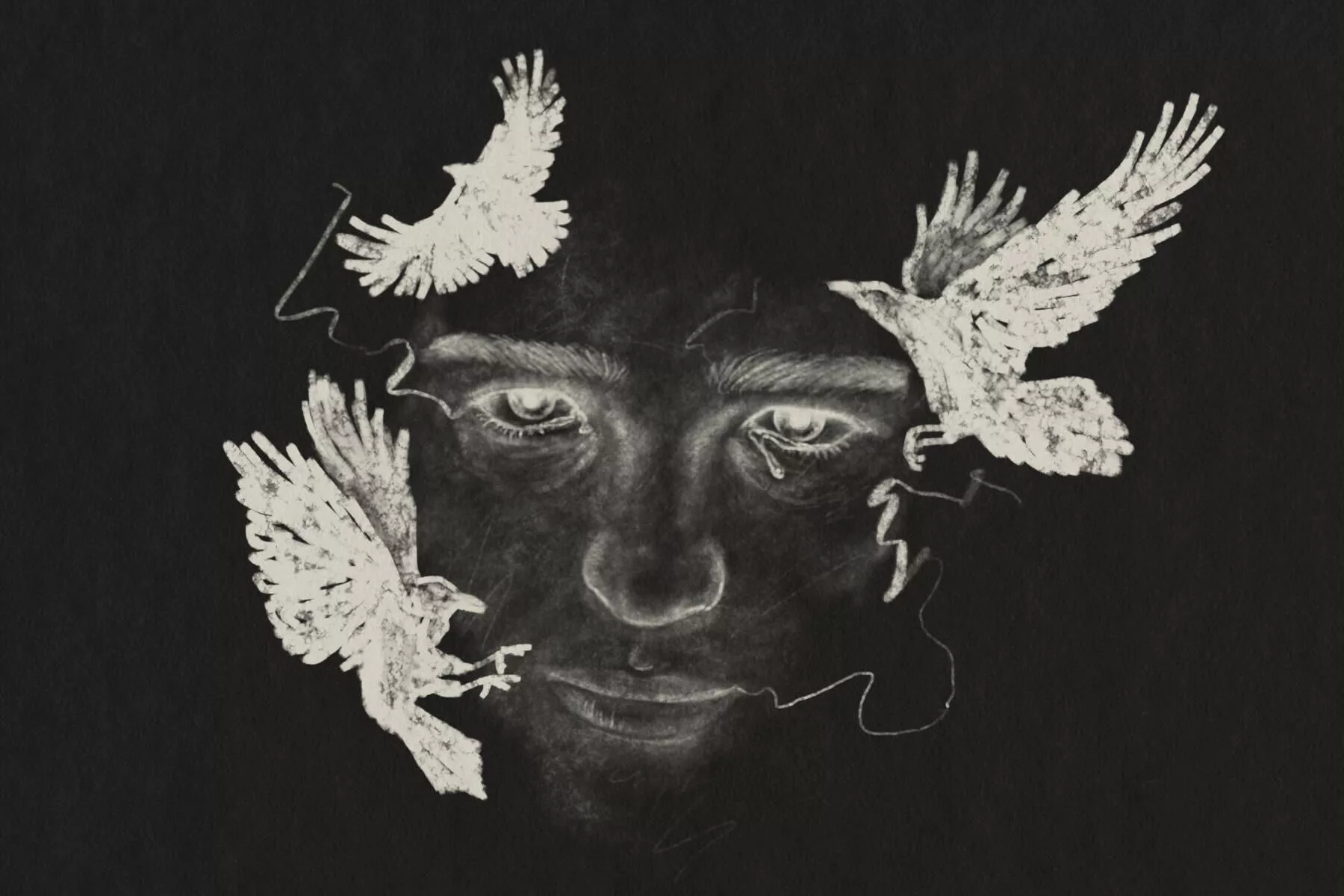Exploring the neuroscience of grief. Image credit: Frankie Frazer, The Oxford Scientist.
Grief, unfortunately, is a universal experience, with few making it through life without losing a loved one. Some argue that grief is the cost of love—the feeling of yearning, sadness, and unease after someone’s death is the price paid for once having a close relationship with someone.
Most people show great resilience after loss, with typical grief characterised by temporary emotional and bodily distress and impaired functioning. Meanwhile, in others, bereavement can be a stressor which precipitates or worsens psychiatric disorders. In fact, 10–15% of people find themselves unable to cope with grief and develop Prolonged Grief Disorder (PGD), which is marked by intense and unrelenting symptoms and requires specific psychotherapy for its treatment.
To date, grief has largely been a poorly researched field, but over the past two decades academics have begun to employ the various tools of modern neuroscience to better understand the science behind grief and answer several key questions: What happens to the brain and the body during the grieving process? What makes a person more or less resilient in the face of loss? Are there any effective therapies for grief? How can we best support those who are grieving?
To date, grief has largely been a poorly researched field, but over the past two decades academics have begun to employ the various tools of modern neuroscience to better understand the science behind grief.
In the first few weeks following the death of a loved one, there are an array of feelings and emotions which may arise. What, though, is happening in the brain during this time? Numerous neuroimaging studies of grief have been conducted, in which grief is defined as the momentary emotional state of yearning (as opposed to grieving which is scientifically characterised as how the relationship to grief changes over time).
Many neuroimaging studies have revealed that multiple separate brain regions, termed a distributed neural network, mediates the sensation of grief. For instance, one study identified three brain regions which were specifically activated by “grief-related” words (e.g., funeral, loss, etc.) in the bereaved, and a fourth brain region specifically activated by photographs of the lost loved one.
More interestingly, the study found that there was a response in a part of the brain’s reward network, the nucleus accumbens, of people suffering with PGD. Studies conducted in animals have also implicated the importance of the nucleus accumbens in mediating the sensation of grief. Although not yet entirely clear why this region is involved, it has been theorised that this may be because grief-related words and photographs of a lost loved one have a rewarding quality in the continual yearning of PGD. Whereas, in regular (i.e., temporary) grief, the words and photographs are simply understood by the brain as a memory of someone no longer there.
Grief is not just psychological but also physical.
However, many neuroimaging studies are limited by their lack of replicability and small sample sizes. Additionally, an inherent limitation of using neuroimaging is that research will largely only capture one snapshot in time, rather than examining changes which occur over months or years of grieving. It would be helpful if future studies could examine the same person multiple times across the first year or two of grieving, in order to understand what a typical trajectory of bereavement, if such a thing exists, looks like.
It may also be interesting to see how momentary grief and the grieving trajectory differs between the physical loss of a loved one and other forms of grief, such as ambiguous loss (e.g., when a loved one is physically present but mentally absent, as with dementia) or parasocial loss (e.g., intense grief at the loss of a celebrity).
Of course, grief is not just psychological but also physical. One review found that, out of those bereaved, people scoring higher on psychological measures of grief also had higher levels of certain stress hormones, such as cortisol and adrenaline. Over time, it is known that chronically high levels of stress hormones can increase the risk of many physical and mental conditions, such as cancer, autoimmune conditions, depression, and anxiety. This has long term effects on the quality of life of the bereaved. For instance, within the first 3 months following the death of a child or partner, bereaved parents and spouses are nearly 2 times more likely to die than those not bereaved, and even after a year following the death, they are 10% more likely to die.
It is therefore clear that the loss of a loved one can carry serious consequences for a person’s physical and emotional well-being. To mitigate the impact of loss, various forms of grief therapy have been proposed. Such therapies involve common counselling approaches, providing a platform for people to discuss their feelings, equipping them with skills to manage and regulate their emotions, and developing skills around acceptance. There is some controversy surrounding the effectiveness of such therapies, with one meta-analysis of many other studies failing to find encouraging support of grief therapies.
However, one specific form of grief therapy for PGD called Complicated Grief Treatment, which draws from both interpersonal therapy and cognitive-behavioural therapy, was found to result in larger and faster responses than standard psychotherapy. Preliminary research suggests that various pharmacological agents (specifically, antidepressant drugs) may also be beneficial in the treatment of PGD, however randomised trials are required to further study this.
There is much to be learnt about the science behind grief. Understanding what happens in the brain and body is important for many reasons, one of which is the fact that grief is an important health disparity. Mortality massively varies between communities, for instance during the COVID-19 pandemic African Americans were twice as likely to die from COVID compared to White Americans. Thus, it is important to understand grief, such that the most effective resources and support (e.g., counselling, grief education in schools, etc.) can be offered in an equitable way to provide the ability to process grief to all people regardless of their community.
Moreover, although something so devastating cannot be ‘fixed’ by learning about the science behind grief, understanding the biological underpinnings of grieving may be comforting for some individuals in the midst of the lonely and often frightening psychological landscape of bereavement. Science can remind us that, when feelings of grief emerge, our brain is simply expressing profound love for whomever we have lost.
Support for those who have recently experienced the loss of a loved one are signposted on https://www.ataloss.org/





